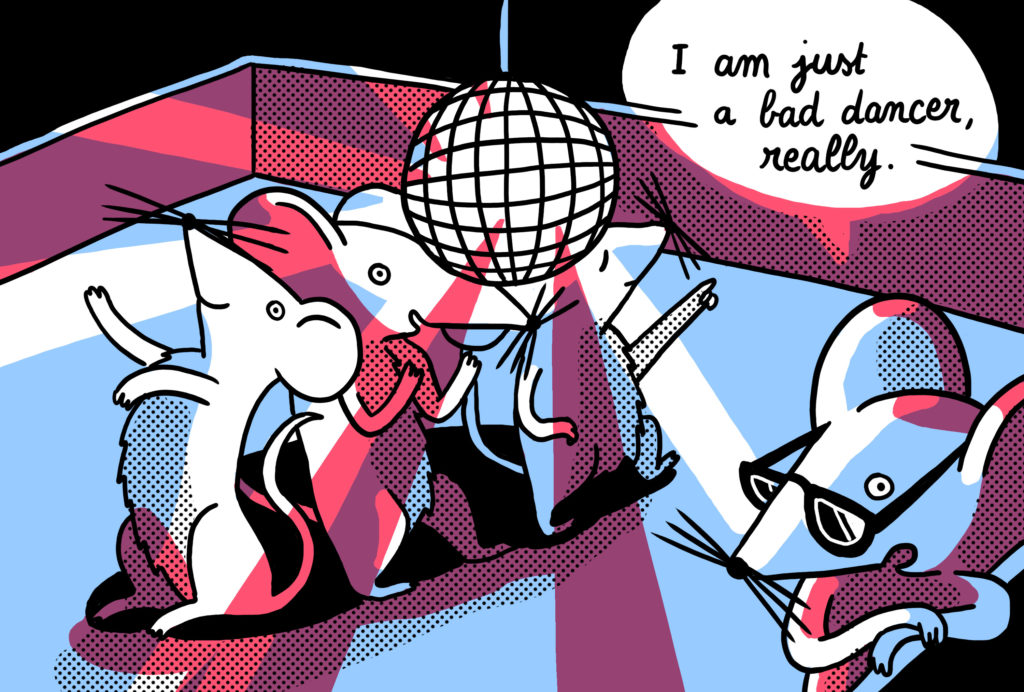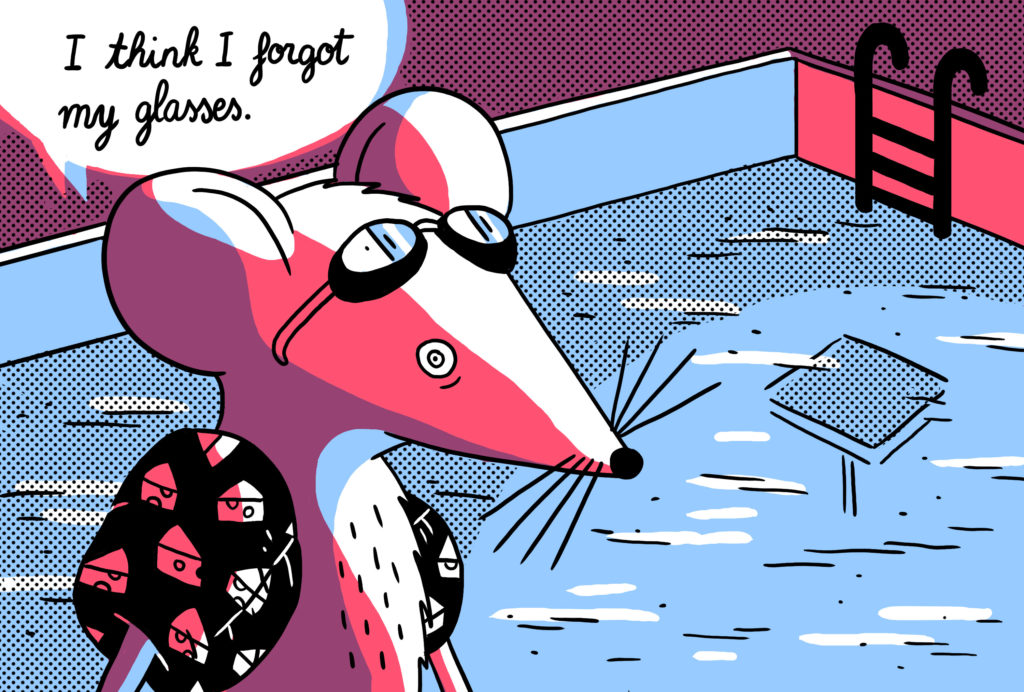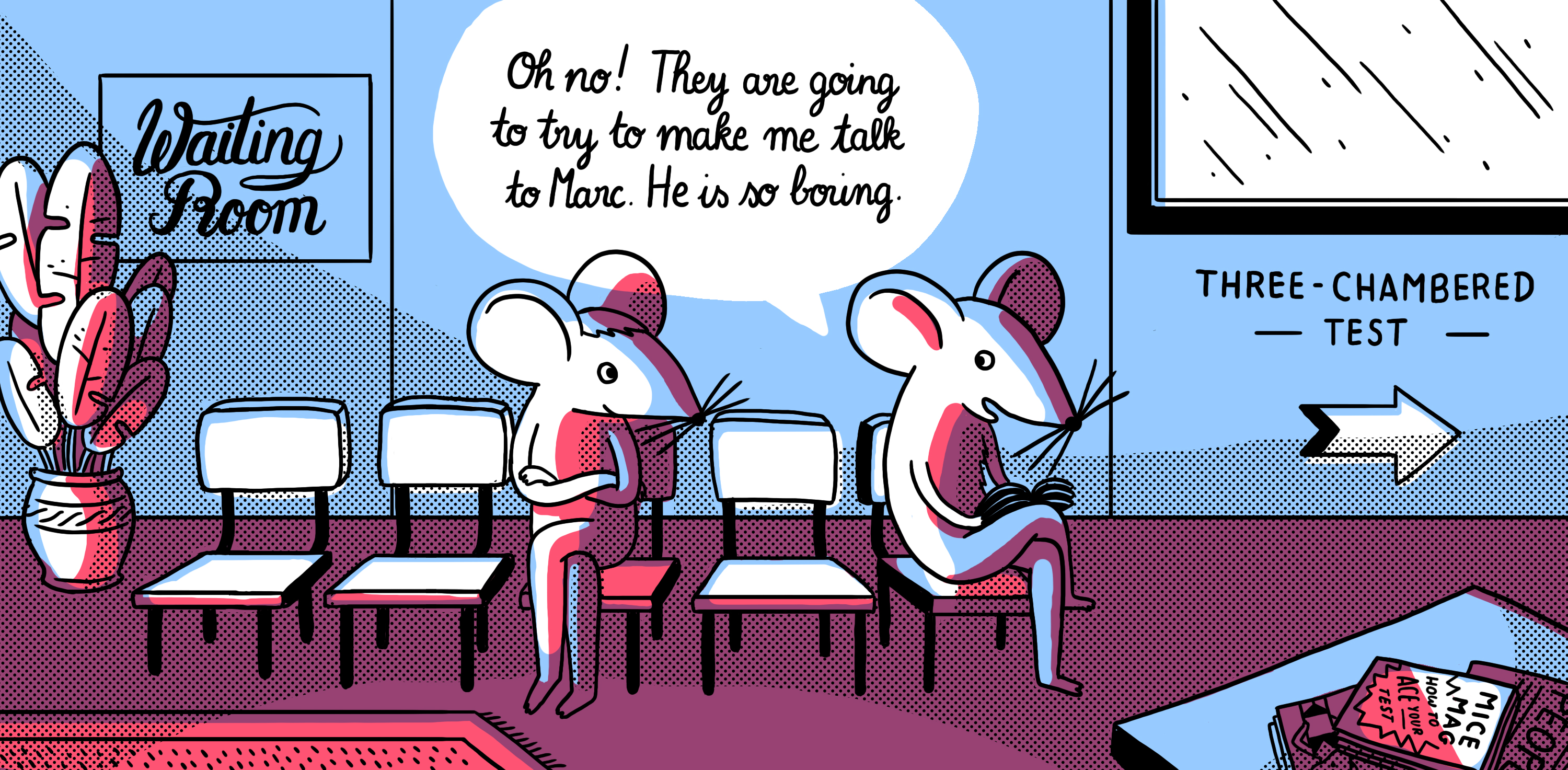THIS ARTICLE IS MORE THAN FIVE YEARS OLD
This article is more than five years old. Autism research — and science in general — is constantly evolving, so older articles may contain information or theories that have been reevaluated since their original publication date.
Tests for unusual behavior in mice are notoriously prone to operator error. Many scientists conduct or interpret them incorrectly, and the problems then taint the literature.
For example, researchers often incorrectly gauge sociability, and they frequently fail to account for how repetitive behaviors caused by a mutation might affect performance on behavioral tasks.
“In high-impact papers, I see [mistakes] frequently, maybe 50 percent of the time,” says Jill Silverman, associate professor of psychiatry and behavioral sciences at the University of California, Davis. “It’s usually when someone makes a new genetic model or has a new treatment that they think could now come into this space.”
We spoke with autism researchers schooled in mouse behavior about what can go wrong with the tests — and how to avoid those traps.
Social creatures:
An activity called the ‘three-chambered social approach task’ assesses sociability in mice and is frequently used to characterize mouse models of autism risk genes.
The testing apparatus consists of three chambers: a central space, a chamber on one side that includes an unfamiliar mouse under a mesh cup, and a chamber with a mesh cup that may either be empty or contain an object.
After giving the test mouse 10 minutes to acclimate to the apparatus, researchers place it in the middle chamber and track where it spends the following 10 minutes. Only mice that spend more time with the novel mouse are classified as appropriately ‘social’ creatures.
This is a strictly binary measure, Silverman says: All it can reveal is whether a mouse prefers another mouse to an object. Researchers must not compare the amount of time a mutant animal and a control mouse spend with the unfamiliar mouse to conclude that one is less social than the other, or say that an experimental drug made an animal more social than it was before.
The reason is that the absolute time spent can vary depending on mouse strain, sex and unpredictable factors, such as the effects of an engineered mutation. “There is no set number of seconds that means social,” Silverman says.
For example, a mutation might lead to unpredictable changes in an animal’s base level of activity, which would affect the amount of time spent with another mouse.
“If the animal is really hyper and just running around the box, of course you’ll get reduced social interaction,” says Stacey Rizzo, director of the Mouse Neurobehavioral Phenotyping Facility at The Jackson Laboratory in Bar Harbor, Maine. “It can’t really attend to the task.”
Alternatively, an animal might be lethargic, or exhibit repetitive behaviors such as jumping; neither state is conducive to social interaction.
Researchers can draw on observations other than simply the amount of time spent in the chamber with another mouse, says Rodney Samaco, assistant professor of molecular and human genetics at the Jan and Dan Duncan Neurological Research Institute in Houston, Texas. For example, does the mutant mouse sniff the cup or otherwise engage with it, or does it crouch in the corner of the chamber? A mouse might spend more time in the chamber with the novel mouse, but if it is crouching in the corner, it’s hard to claim it is being social.
A bigger potential issue with the test is that it may not measure sociability at all, says Mu Yang, director of the Mouse NeuroBehavior Core at Columbia University. Adult male mice are highly territorial and do not approach one another in the wild, so their interaction during the test may not reflect the animal’s capacity for social engagement. “I don’t think it’s a very ecologically validated test,” Yang says.
Field day:
In the open field test, mice are released into a square Plexiglas chamber about 16 inches wide for 10 minutes. Researchers measure how much time the mice spend in the center of the chamber versus the relative ‘safety’ of its edges. The more time a mouse spends hugging the perimeter, the more anxious it is presumed to be.
However, performance on the test depends greatly on the mouse strain, Silverman says. Giving anxiety drugs to mice before they perform the task should cause an increase in time spent in the center of the open field. Yet a 2015 study showed that such drugs have no effect on the performance of three lab strains, including the strain C57BL/6, which is commonly used to create autism mouse models1.

The open field test should never be the only measure of anxiety, says Samaco; researchers should use another measure, too, such as the light-dark box assay, in which the mouse chooses between a large, brightly lit chamber and a smaller dark chamber.
They should also make sure the animals have no motor problems that slow them down or prevent them from moving around.
Learning fear:
In fear conditioning, a classic Pavlovian task, researchers expose the animal to a mild electric shock to the foot along with a sound, which together cause the mouse to freeze in place. The following day, researchers test whether the mouse freezes in response to the sound alone as a measure of its memory.
But first, researchers must make sure the animals can hear the sound and feel the shock, Samaco says. Genetic mutations can alter both hearing and shock sensitivity in unpredictable ways.
It is also important to test different shock levels on a few of the animals in each experimental and control group, to find the levels that trigger comparable freezing responses in the groups.
“It’s been shown by many labs that males and females, and mutants versus wildtypes, respond differently to a given shock intensity,” Rizzo says.
Swim test:
The Morris water maze is a test of spatial memory. Researchers train mice to find a submerged platform located in one of four quadrants of a circular pool. In a series of 60-second trials over several days, they track how long it takes the mouse to reach the platform. As mice learn the task, they do it more quickly each time.
On the last day, researchers remove the platform and release the mouse into the pool. If it swims to the quadrant where the platform was previously located, they conclude it has learned and recalled the location.
Researchers often skip that last step, recording just the final time to platform, says Silverman.
The test depends on good vision. Yet many strains of mice, including C57Bl/6, have poor eyesight, which often gets worse with age. Motor and balance deficits can also interfere with the test.
Even if these problems prevent the mouse from getting faster at finding the platform, Silverman says, if it swims to the right quadrant, it’s clear the mouse has learned and remembered the location.

Details, details:
For any behavioral test, it makes sense to check for any motor or sensory issues that might interfere with the results. And Silverman says that combining results from males and females is a problem, too, unless a researcher has conclusively shown there’s no difference in how the sexes perform.
Samaco also advocates for reporting more details about the methods used, including those relating to basic animal care — when the lights are on and off in the animal facility, the temperature and how many animals occupy the same cage, for example. He says he always searches for that information in studies reporting surprising behavioral results, but usually cannot find it. “The devil is in the details,” he says.
On the plus side, high-impact journals seem to be increasingly tapping experts to review papers with a behavioral component, Rizzo says. And Silverman notes that researchers also seem to be including more thorough behavioral tests in their grant proposals.
The bottom line, Samaco says: If you aren’t trained in the finer points of behavioral assays, reach out to someone who is. They would be happy to help.

By joining the discussion, you agree to our privacy policy.